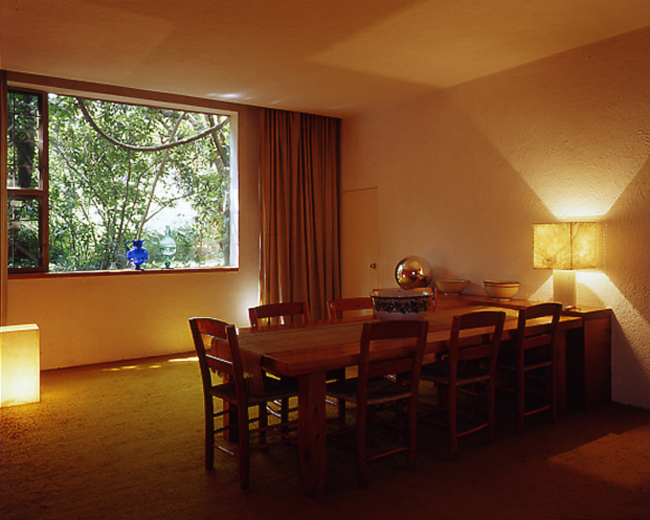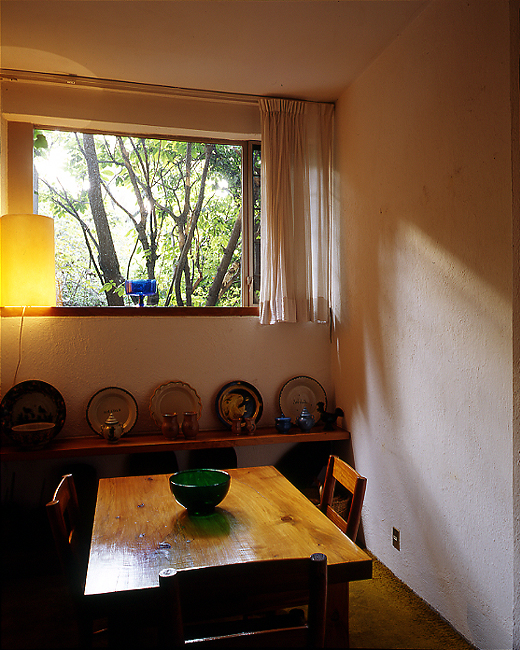GROUND FLOOR / Dining and breakfast rooms
The windows of the ground floor can be understood as different ways of a single act: the garden contemplation.
The living room, a large space interrupted only by a cross-shaped wooden screen, takes transition to an unusual extreme. The glass emerging from the floor blocks the transit and projects the reflection of the wood floor towards the garden. Only the eyes can transit freely through this scene. Communication with the outside is limited to a small lateral door.
The different dimension of the dining room window transforms the view of the garden into a more abstract picture. From the perspective of someone sitting at one of the table’s seven seats, it succeeds in detaching the vegetation from the ground and adding yet another color to the spatial composition.
This place recalls one of the central figures of Luis Barragán’s artistic development, the artist, eccentric collector and full time aesthete, Jesús Reyes Ferreira, “who doesn’t paint, smears”, according to his own description. He entered into the architect’s mid-life as the master of impeccable taste with fundamental lessons in color and composition.
The friendship and influence of that “master of the difficult art of watching with innocence” clearly contributed to Luis Barragán’s turning point in the expression and development of his own language. Although this guide must overlook the rest of the art collection, the Archangel in the dining room, painted by Reyes and one of his very few large-scale oil paintings, has a special place in the house because of its intimate relationship with architecture.
The breakfast room window elevates once again and loses its frank, frontal position. The garden, then, is seen as a drifting perspective in probably the most intimate space of the entire house, where the gaze must be preserved between its walls.
In the large, well-lit kitchen, the garden can only be seen when the door is open. The transparent glass here denotes a very different hierarchy of windows from the ones previously described.



